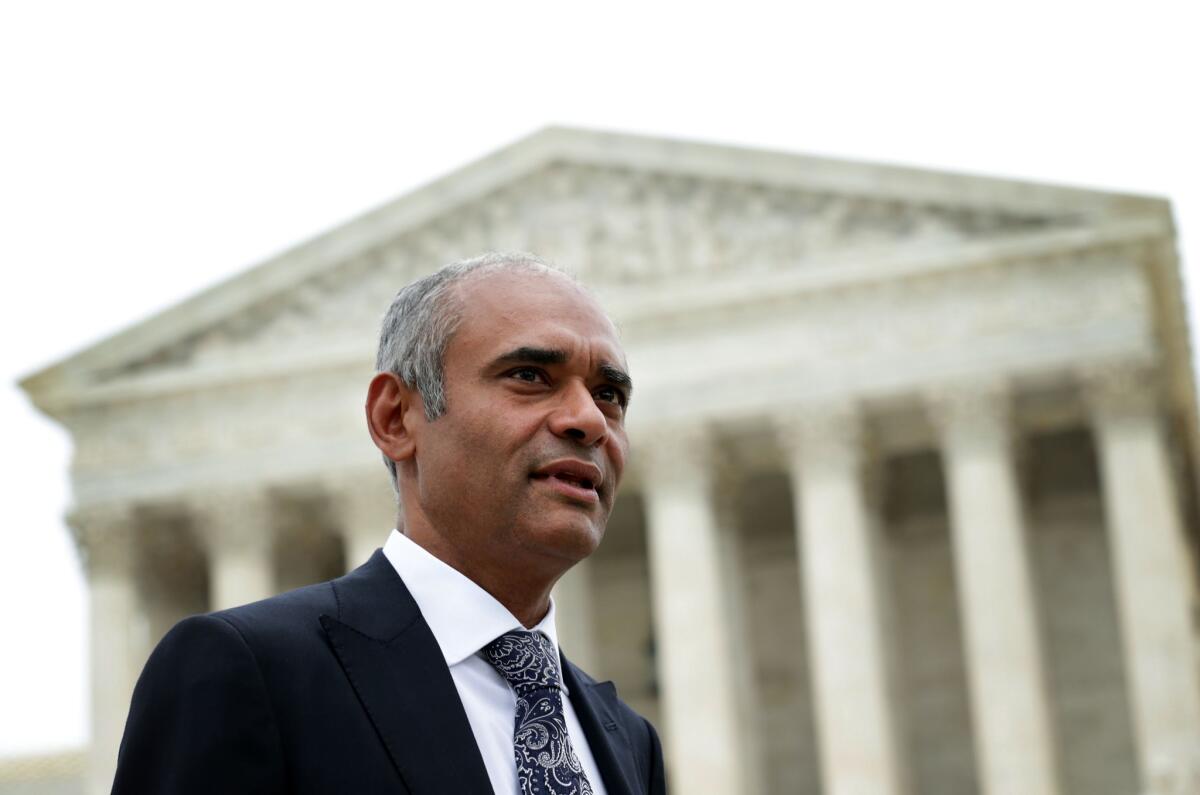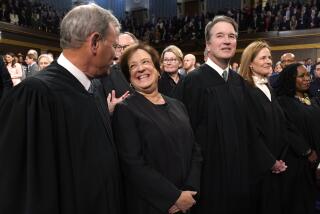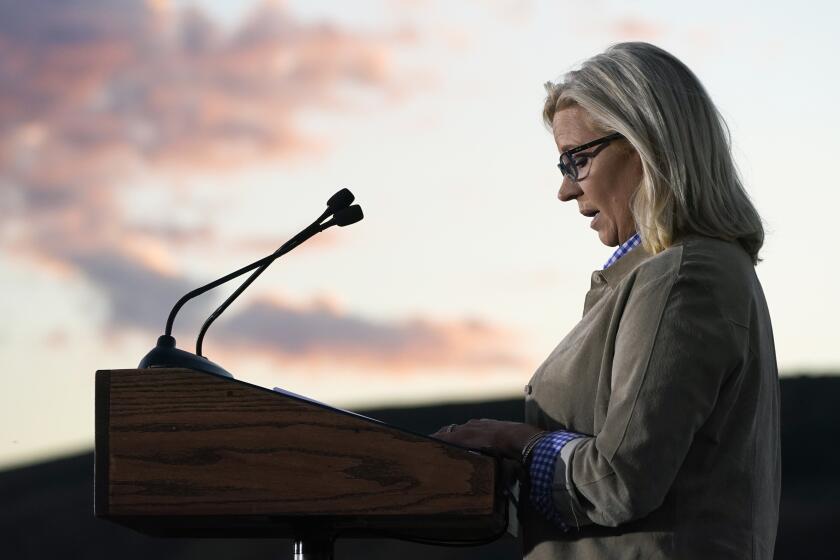Opinion: The Supreme Court’s odd new standard: ‘Looks like cable TV’

The Supreme Court’s smackdown of Aereo’s local-TV-over-the-Internet service Wednesday should remind tech companies that the justices don’t appreciate clever engineering.
At the oral argument, the justices’ questions and comments hinted that they were outraged that Aereo would sell a pay-TV service to the public without paying broadcasters for the retransmission rights. To them, Aereo’s technology served only one purpose: to dodge the obligations that federal copyright law imposed on cable operators.
Justice Stephen G. Breyer didn’t say those exact words in the opinion he wrote for the court’s 6-3 majority. But the sense that Aereo is a cable operator in sheep’s clothing seeps through in much of his commentary.
Never mind that Aereo’s technology delivers a different product than other pay-TV operators do. Aereo customers have access only to local over-the-air broadcasts, and unless they sign up for a second antenna, they can’t watch one program while recording another. Nor does Aereo record programs on their behalf; if they forget to tune in or record it, it’s gone. And finally, the service delivers shows to smartphones, tablets and other Internet-connected devices, not conventional TVs.
Such technology-driven differences were immaterial to the court’s majority, which fixated on the surface similarities between Aereo’s service and cable TV. Breyer declared repeatedly that Aereo should be treated as a cable TV operator because its service looked (to him) just like cable.
Perhaps the differences were easy to ignore because the justices had trouble grasping the technology. Breyer, for example, said during the oral argument that Aereo’s tiny antennas could somehow “pick up every television signal in the world.” Ummm, no. Aereo’s antennas are no more capable than the kind consumers buy at Radio Shack, which means they are limited to local TV broadcasts.
Justice Antonin Scalia dissented, calling the new “looks like cable TV” standard a “result-driven rule” — in other words, a standard based not on existing law but on the outcome the majority desired. It’s as if the justices got together and said, “This can’t be legal,” then found a way to make it not be.
The court’s landmark ruling in MGM vs. Grokster, which put the kibosh on the file-sharing networks that emerged after the original Napster, had a similar results-oriented feel. But there the justices applied a statutory principle that, while little used in copyrights, was well known in patent law. And while the court’s “inducement” principle didn’t draw a nice, bright line between legal and illegal behavior, at least Justice David H. Souter’s opinion offered some guidance on where the line falls.
In Aereo, as Scalia rightly noted, the court didn’t specify what “looks like cable TV” means. Is it just a service that offers live TV to subscribers for a fee? Then all Aereo has to do, Scalia wrote, is to delay subscribers’ ability to play their recordings for an hour.
The biggest problem is that the majority’s ruling holds a service provider responsible for its customers’ use of the technology. That’s particularly bad here because those customers aren’t violating copyright law by recording over-the-air TV for later viewing, an activity the Supreme Court blessed 30 years ago in the Sony Betamax case.
Again, the problem stems from the majority’s dismissal of a technology-driven difference between Aereo and cable. The latter gathers programs from various networks via satellite and data lines, then pumps all of them into subscribers’ homes. The former enables customers to tune an antenna to a specific program, direct it to a digital video recorder, then transmit it to themselves through the Internet. Nothing gets transmitted by Aereo without a customer’s intervention.
In past years, Scalia wrote, appeals courts had repeatedly held that service providers do not infringe unless they choose themselves to do something that violates the act. The transmissions here may travel over Aereo’s equipment, but the “volitional conduct” was the subscriber’s, not the company’s.
“It will take years, perhaps decades, to determine which automated systems now in existence are governed by the traditional volitional-conduct test and which get the Aereo treatment (and automated systems now in contemplation will have to take their chances),” Scalia wrote. “The court vows that its ruling will not affect cloud-storage providers and cable television systems ... but it cannot deliver on that promise given the imprecision of its result-driven rule.”
In other words, Aereo won’t be the only tech company regretting Wednesday’s ruling.
Follow Healey’s intermittent Twitter feed: @jcahealey
More to Read
A cure for the common opinion
Get thought-provoking perspectives with our weekly newsletter.
You may occasionally receive promotional content from the Los Angeles Times.











